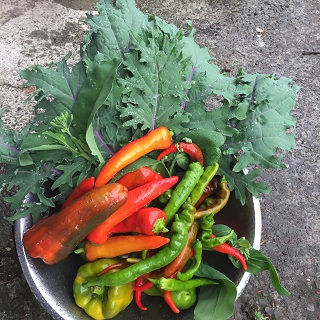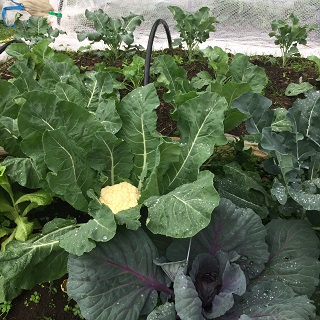 |
|
| > Welcome > Grow and Eat > Plant Food: Observing Autumn in the Garden & How to Save Capsicum Seed
|
|
Observing Autumn in the Garden & How to Save Capsicum SeedEvery garden is different, every soil is different. It is said we can learn more by moving around and growing in different soils... This season just past was Summer Season 2 in this garden, west of a city in the Hawke's Bay, in the east of the North Island of New Zealand. We have learned by observing "weed" growth, that this light soil prefers spacious planting, especially in drier weather. Some species of useful weeds naturally spaced themselves 20-30cm apart. Last year, this part of the world received only 50% of the usual rain, and this year 2020, thus far we have received about 25% of the normal rainfall. Some hills look almost like deserts. Now the tomatoes are over, the very last self-sown plants have been pulled up and hung on a fence for the final fruit to ripen enough to be removed and taken inside. The rush to "do something" with the produce is over, and autumn has settled. Just one crop is lingering from summer - the capsicums. From seed sowing to ripening of the capsicum fruit takes 10 months in this part of the world. Of the four varieties grown, none was faster or slower than the others. So 10 months is our yardstick for next season, if the world is still stable enough to grow food. So just as we are cutting, chopping and freezing capsicums, we will also be saving that very precious seed in readiness for sowing in 8 weeks time! How to Save Capsicum Seed (called Sweet Pepper elsewhere)First gather your equipment:
Other gifts from the garden this week included two beautiful summer sown cauliflowers and a lovely bunch of Red Russian Kale, my favourite.
There are carrots, parsnips and beetroot to thin, sown a tad too late as we were away helping a family member. This week coming up looks like Broccoli week! Delicious, the first broccoli of the season, served with a freshly cut bunching onion. Bunching Onions are simply like Spring Onions, except when they are grown and ravishing in their readiness, you don't pull the plant from the soil. Oh no, you don't! You slice the onion just below soil level. Do you know why? Because the lovely plants GROW AGAIN! On the seed table are germinating peas, open pollinated Chinese Cabbages that are refusing to grow, cabbage seedlings destined for spring planting, dill seedlings, more silverbeet and a range of lovely lettuce for planting out! Very soon, in June, we will be sowing 3-4 varieties of onion seed, to grow into slim tall seedlings for planting in the garden in very early spring. The onion seedlings remind me of very tall, very slim people! My passion for growing vegetables has been an important part of learning about God, for working in the peace and solace of a garden, I pray, praise God for His goodness, the birds, the bees, the trees. And He teaches me through his Guidebook of Life, the Bible, of what is to come next. We are in the closing scenes of this earth. We can watch the events unfolding, and have the luxury of being able to interpret these events, and share the good news with others, if they want to hear and listen. For the Bible has already revealed them to us. We are indeed, in God's hands.
Posted: Sun 17 May 2020 |
|
|

